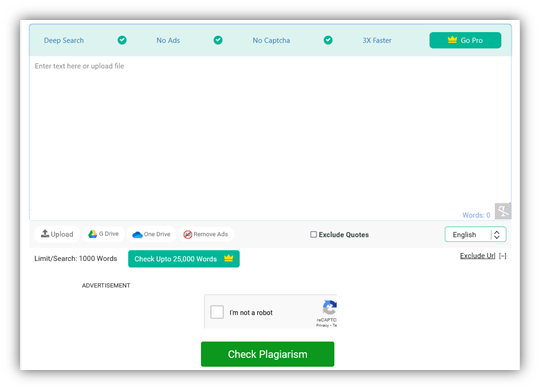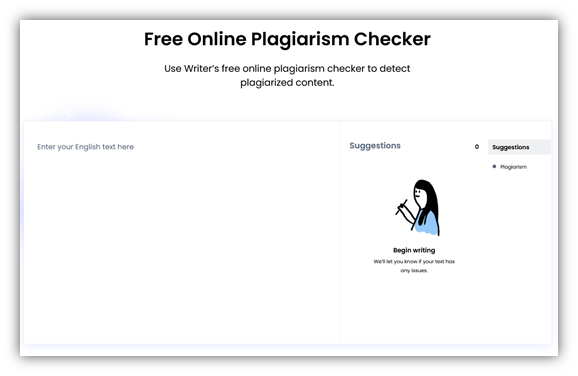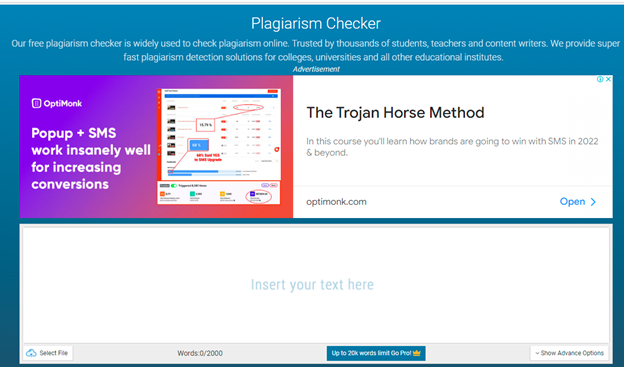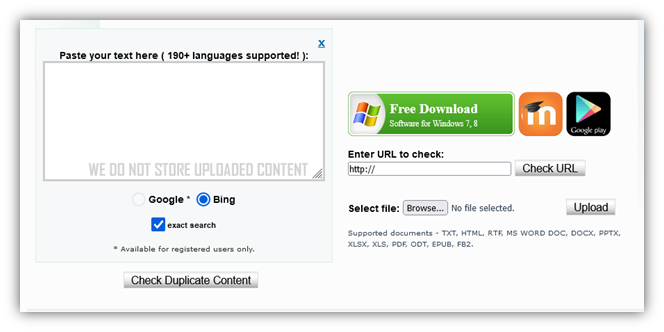Guest Post
How to Increase Awareness and Generate Leads with Local SEO
The rise of Local SEO has made it easier for businesses to increase brand awareness and generate leads through search engines like Google, Yahoo, and Bing. Unlike conventional searches, local ones include a “where” component such as an address or city. Search engines are now prioritizing local businesses in these searches, providing opportunities for those businesses to reach a larger audience. Plus, investing in local search rankings doesn’t require a large financial investment, making it a cost-effective marketing tool. The Google Places feature is the primary tool for local search marketing on the web and is largely free. Bing and Yahoo also offer local business listings. Business websites should be optimized for geo-targeted keywords.

Introduction
Your business has powerful partners that are working hard to help you increase brand awareness and generate new leads. Are you taking advantage of Google, Yahoo, and Bing’s new focus on Local SEO?
What is Local vs. Conventional Search?
Local search queries differ from conventional searches in that you are adding a “where” component, such as an address, a city, or a zipcode, to the “what” component (keyword, product, service, etc) that you are looking for. For years, these searches have often been dominated by national competitors: large directory sites with thousands of pages and other non-local SEO powerhouses. Now, the game has changed, and search engines want to feature your local business, your products, and your services.

Those companies without a local presence are finding it harder and harder to compete for these valuable search queries – searches that are increasingly being performed from smartphones and other mobile devices by consumers who are immediately looking to make a purchase.
Why the focus on Local SEO?
Consumers have always been in need of local products and services. What’s changed is their behavior and the tools they use to perform local searches. Traditionally, local directories like the Yellow Pages, along with newspapers and local magazines, supplied this information, but the digital age has changed all that. Computers and search engines have replaced the Yellow Pages and increasingly, smartphones and other mobile devices are your computers. When was the last time you picked up a copy of the Yellow Pages to order food or look for a local service or product?
What’s currently happening online is that many sites are battling the search engines for your local attention. While Google is still dominant (and has been since rolling out Google Maps in 2004), the landscape has changed: in addition to Yahoo! and Bing, many new local options like FourSquare, Yelp, Merchant Circle, and Urban Spoon are giving consumers what they want – reviews and feedback on local merchants and their services or products.
All of this focus on local search means that now is the perfect time to roll out a local SEO strategy and grow your business.
Cost a Concern? Local SEO is Budget Friendly
It is possible to achieve great local search rankings without a large SEO investment – as long as you are willing to invest the time. Local business listings, when optimized, can quickly achieve first-page exposure and will outperform expensive, traditional advertising.
Study after study illustrates that organic search traffic converts at a higher rate than most other marketing channels. Consumers are actively seeking you out – this makes search marketing much more effective than traditional “interruption” marketing.
The Great Equalizer
Google’s focus on local businesses has resulted in a dramatic change in search results compared to the past. Geo-targeted searches return Google Maps listings that level the playing field for small businesses that have one huge edge over national competitors: a local address.
 Without that all-important street address, it makes little difference how much money these companies throw at SEO. You can rank well and get in front of potential customers when and where they are shopping. This makes local search one of your most powerful tools for building brand awareness and establishing credibility and authority.
Without that all-important street address, it makes little difference how much money these companies throw at SEO. You can rank well and get in front of potential customers when and where they are shopping. This makes local search one of your most powerful tools for building brand awareness and establishing credibility and authority.
There’s an App for That – Local and Mobile
Whether you’re an iPhone, Droid, or Blackberry user, one thing is clear– the user experience on mobile puts everything at your fingertips. Apps that tie into Google Maps or other local listings will often eliminate search listings altogether and only pull from these niche listings. Your business details, reviews, and driving directions are at your customers’ fingertips, and the only way you miss out is if you aren’t listed locally.
Local Search and Google
Google Local Success Starts with Google Places
Google Places is the #1 place for local search marketing on the Web, and it’s largely free. Google Places gives your business visibility to potential customers even if you don’t have a website. More than likely, you have seen Google Places listings recently when you have searched for services or products in a specific city. People performing these types of searchers are HOT buyers and they want to buy locally. Google realized this and has slowly transitioned Google Places into a powerful tool for local search.
Keep in Mind that Google Places is not a Directory
Google Places displays listings as ranked by a mathematical formula (algorithm). So, your business may not always appear on the same keyword search in the same order or even in the same category day-to-day. Google states that:
-
“Changes are automated and impartial.”
-
“Having a correct, comprehensive, and up-to-date listing is the most effective way to ensure the best possible ranking.”
-
“Google Maps ranks business listings based on their relevance to the search terms entered, along with geographic distance (where indicated) and other factors. Sometimes our search technology decides that a business that’s farther away from your location is more likely to have what you’re looking for than a business that’s closer.”
-
“Google Maps and Google Places are a free service, so there’s no way to request or pay for a better ranking. We also can’t provide additional details about our ranking algorithm. We do our best to keep the details of the algorithm confidential in order to make the ranking system as fair as possible for everyone.”

The Evolution of Google Places
In September 2004, Google launched its “Google Local” business listings with maps. “Google Maps,” a more extended mapping feature, was launched in April 2005, featuring “satellite view” and directions, and quickly that was merged together to form “Google Places.”
Integration with Organic Search Listings
For many years, Google Places listings have dominated local search results and you are probably very familiar with the “7-pack” search results, which display a local map and the top 7 local businesses corresponding to your keyword query. These results frustrated many companies’ local SEO efforts because they pushed companies with great organic search ranks far down page 1 (best case) and onto the second page (worst case).
Enter the “0-Pack”
November 2010 ushered in a dramatic new look and feel for many local search results, one which integrated the “7 pack” results with their corresponding organic search results.
This new look can now be found in many markets, as can the traditional 7-pack results, which don’t appear to be phasing out entirely.
What You Need to Know: The Zero-pack emphasizes the importance of optimizing both your Google Places listing as well as your organic listing – local companies with a focus on each seem to have the edge right now. Here’s a snapshot of this new look:
As you can see, Google’s new layout gives businesses significantly more exposure than the 7-pack layout. Plus, the new results take up more real estate, which further spotlights the 3-4 optimized listings that rank near the top.
So how do you ensure that top ranking? Let’s discuss that now.
Building a Powerful Google Places Listing
Listen to Google. Google provides you with concise directions on how to build your business’s places page. Before you begin, there are a few things you should understand that will help ensure that Google Places is having maximum Local SEO impact.
Consistency – Conventional SEO puts a high premium on having the proper keywords in place…for good reason. Google Places does give you plenty of opportunities to tell visitors what search terms your business relates to but you also need to ensure that your business information is consistent with the contact information (address, phone, URL, etc) found on your primary domain AND any citation sites. Google needs to be able to trust you, and when they see consistent business information across multiple sources, it helps.
Completion – Complete your Google Places listing. So many businesses go halfway and provide the bare minimum, but a thorough, complete Google Places listing will rank better and provide a stronger user experience. This means photos, videos, and coupons – Google allows you to include a lot of information, and remember: It’s ALL FREE.
Citations – To Google, citations equate to trust in the same way backlinks do. Citations are loosely defined as a link from an authoritative source or directory, review site, or local pages directory. Citation links help establish trust with Google through the validation of business information. Be sure that all citations accurately represent your business address, phone, URL, and other pertinent information (as mentioned above in the category section).
Note: Be sure to check out our citation source list in the conclusion section
Here is a quick rundown of what an effective Google Places listing entails:
Business Name
-
Represent your business in the exact same way that it appears offline.
-
Save taglines, phone numbers, or URLs for their appropriate place. Inclusion here might appear as an attempt to manipulate results.
Business Location
The location appears to play a key role in the places algorithm. Follow these guidelines carefully:
-
Use the exact same street-level address that you should have listed in the footer section of your website. Consistency is key.
-
Keep in mind that this needs to be a physical address, not a P.O. Box.
-
One is listing per physical business location – even if you operate in a larger service area. Don’t worry – you can designate your service areas separately.
-
Do you have multiple specialties in the same office? Create a listing for your offices and a separate listing for each practitioner. According to Google’s standards, this should not appear manipulative.
-
Remember, this is about trust and consistency across many different information sources; if your address is somewhat rural or miles away from a city’s “epicenter” zip code, you might be tempted to list just the city name.
-
Multiple business locations? Create listings for each!
Website and Phone
-
Provide a phone number that connects to your individual business location as directly as possible, and provide one website that represents your individual business location.
-
Your phone number SHOULD be a local number for maximum impact.
-
Also, know that you should not select the “verify listing by phone” option if you use an automated phone system. Google’s system can only provide your verification PIN to a live person or voicemail.
Categories
Here is where your keywords will come into play.
-
Keep in mind that Google Places categories should say what your business IS, not what it does. For example, If you are a law firm, that is your category. Not “personal injury attorney.”
-
Google will provide category suggestions – you can override these and create your own, but the inclusion of location keywords will appear as an attempt to manipulate the listings.
-
Get as specific as you can within categories. Say you have a book store; try to choose a specific category like “college books store, “comic books,” “used book store,” “new books,” or “rare and antique books.”
-
Also, check and correct listings for your business on citation sites such as YellowPages.com and SuperPages.com because Google aggregates information about your business from another website to determine under what categories and for what keywords your Google Places business listing appears.
Advanced Tips – Reviews
Customer reviews will usually appear with your Google business listing. It’s smart to have customers and colleagues create Google Maps reviews for your business.
Positive reviews are a powerful motivating factor for Google users deciding which business to buy from. First, your reviewer must locate your business in Google Maps, click “More info,” and then click “Write a review,” then write the review, choose a rating, and click “Save.”
Important note: They must be logged into their Google Account to write a review. If they’re not logged in they’ll be prompted to either sign in or create a Google Account. Their Google Account nickname will appear next to the review.
Google also pulls reviews in from 3rd party resources – this means those reviews can create incredible exposure for your brand. This can be a double-edged sword, though and many businesses have experienced problems with inaccurate or unjustified negative reviews.
Google advises, “If you’re concerned about a review that was submitted through Google Maps, click the Flag as inappropriate link found under the review and submit a report. If we find that the review is in violation of our Google Maps policies, we’ll remove it. Some reviews found on Maps listings are created on third-party websites such as Yelp, CitySearch, Yahoo, and Trip Advisor. If you feel that a review from a third-party site is inaccurate, you would have to express your concerns to the webmaster of the site where the review was posted. If the review is removed from the third-party website, the change will also be reflected on Google.”
Yahoo and Bing Local
Yahoo Local (only available in the U.S.)
Much like Google Places, Yahoo offers a thorough local business listing that is tied directly into their search engine. Unlike Google, Yahoo’s local listings are not tied to a local area map.
 If you are using Yahoo for local searches in the U.S., it is likely that you will see local directory results. Unlike Google, Yahoo offers a free basic listing but withholds many extended features for their “enhanced” listings which cost $9.95/mo.
If you are using Yahoo for local searches in the U.S., it is likely that you will see local directory results. Unlike Google, Yahoo offers a free basic listing but withholds many extended features for their “enhanced” listings which cost $9.95/mo.
The free basic listing is limited to the following:
-
Contact information: phone, website, address
-
Hours of operation
-
Products or Services
Enhanced listings include the above plus:
-
Your logo and tagline
-
Up to 10 company photos
-
Detailed business description
Like Google, Yahoo integrates reviews from many different social networks and includes them in your local listing under a tab entitled “web reviews.” Yahoo also indexes review content, which makes keyword-friendly reviews a powerful ally – review content alone can literally help position you above your competition when local search results are returned. Be sure to create or claim your Yahoo local listing – oftentimes, the traffic here will convert very well. Yes, the volume pales in comparison to Google in most markets, but it’s still a great free resource for your business.
Bing Local
Bing’s local listings now run through the Bing Business Portal and are tied to a map feature that is very similar to Google Maps. Bing’s search volume has grown, and many customers prefer Bing exclusively… registering with Bing’s Business Portal will ensure that you are capturing the attention of these non-Google web prospects.
Within the Business Portal, you can:
-
Claim, create, verify, and manage local business listings
-
Identify key search categories where you want your listing to appear
-
Customize listings with enhanced details such as logos, photos, and more
-
Create a mobile Website (and free QR Code) so customers can learn about your business on their mobile devices
-
Create a custom menu (restaurants and bars) for inclusion on a mobile menu
-
Create Deals (coupons) and promote them for free on Bing (both PC and Mobile) and Facebook
Bing’s listings also include testimonials and reviews from 3rd party sites like citysearch.com and Yelp. Make these reviews a high priority. Don’t be afraid to ask for them! Trust and credibility are key components to your online success. The popularity of Yelp and other aggregator sites means that one positive review can carry significant weight across many different sites.
Note: The mobile website offering makes the Bing offering a great resource – one that you will want to take advantage of to round out your local SEO strategy.
Your Website
While local listings on various search engines have been emphasized, it is important to highlight that your business website needs to be optimized for your geo-targeted keywords. Standard SEO practices apply here, and try to include your city or regional keywords in:
-
Your URL
-
Page Titles
-
Meta Description
-
H1 and H2 tags
-
Throughout your site content
Refrain from keyword stuffing
Google hates it, and so do your site visitors. It’s easy enough to convey to both your readership and the search engines what your various pages are about without entering “black hat” SEO territory.
Are you blogging?
Blogging is a great way to increase your local ranking. It is easy for local businesses to include geo-specific keywords in posts about current events, local government policies, or business interests. You can even add these keywords to your tags and create categories. Again, just make sure that you are writing FOR YOUR READERS and not causing harm by adding blog posts or categories that are geo-targeted but confusing.
Link Building Locally
Local link-building opportunities abound – as long as you know how to find local sites. Here are some of the most obvious ways to build links locally:
1. Use Social Media – Twitter, Facebook, and LinkedIn communities will help you network and find likeminded people who would be willing to link to your site
2. Associations and Organization – are you a member of the Chamber of Commerce? Better Business Bureau? Local organizations like these will link back to your site and help search engines trust you as a local authority site. Don’t stop there – can you think of other local groups you are affiliated with? Credentialed by?
3. Query Local Blogs and Websites – you might live in an area populated by great local sites and blogs that you can tap into. Links from these sites establish the local trust that the search engines look for, so comment with links, offer to guest post, or request a link for a valuable “local resource.” To find sites like this, simply search for:
-
Your City + “Blog” or “News”
-
Your Zip Code + “Blog” or “News”
4. Directories – finding local directories should also be easy. Use search queries such as:
-
Your City + “Directory “
-
Your Zip Code + “Directory “
-
Your Neighborhood + “Directory “
You can even do a statewide query for directories like this – you get the picture.
This is not meant to be an exhaustive link-building list but a local complement to the conventional SEO that you are engaging in. Remember – content is KING! Writing valuable content will build credibility locally and not only attract Google, Yahoo and Bing but will also elevate your status as an expert with potential customers.
Congruency is Key
It’s vital that you maintain consistency in how you describe your company and list your address and other company-specific information. Your website should include your company contact information in your footer – so that the local listings that you have worked hard to build can recognize your business. The biggest reward here will be when your site and places listing populate in Google’s new “O-pack” local listings.
Conclusion and Additional Resources
By now, you should have clarity on the importance of local SEO to your business. If you are targeting customers regionally, it is in your best interest to implement a local search strategy to ensure that they find you when and where they are shopping. Most resources are free. Others are very budget-friendly, and this makes for a high ROI activity.
Start with Google Places – it will have the most impact and, as mentioned, will help your organic search efforts for dual impact. Expand from there and focus intently on getting as many citations as possible. Not only will they drive targeted traffic to your site, but they build much-needed trust.
Last but not least – Measure your strategy’s effectiveness by carefully annotating updates and new listing creations in your analytics program and measuring traffic and conversion increases. Your metrics won’t lie to you – your local SEO strategy should include many new listings, so it’s important to see which ones best suit your particular niche.
Local Citations – Here is a list of some of our favorite local citations:
1. Yelp – www.yelp.com
2. Foursquare – www.foursquare.com
3. Merchant Circle – www.merchantcircle.com
4. Judy’s Book – www.judysbook.com
5. Dex Knows – www.dexknows.com
6. Local.com – www.local.com
7. City Search – www.citysearch.com
8. Insider Pages – www.insiderpages.com
Author bio
Jamie Noel is a Marketing Manager and Internet Strategist at Ebranbz. This company specializes in SEO, pay-per-click management, social media optimization, and affiliate management. He enjoys writing about SEO, social media, web development, and IT technologies. He will give support to SEO Resellers. Follow Tari and Ebrandz on Google+, Pinterest, and Twitter to learn more!
Guest Post
10 Steps to Evaluating and Measuring Your Marketing Strategy

When you are trying to market a product, the product or service is only as good as the potential clientele think it is. You need to get them to buy or use the item or service before you can tell if it really works for them. How can you go about evaluating and measuring your current marketing strategy?
Input vs. Output
Check your financial statements. Are you spending more money than you are making? In a strong marketing campaign, this should not be the case. You want to tweak your plan to make more money than you are putting into the project.
Customer Surveys
When you sell a product, include a survey along with it. Ask the customer to rate different qualities of the product that directly relate to the market. For example, ask them how they heard about the product and if the visual appeal of the item had anything to do with its purchase.
Phone Surveys
Distribute flyers, pamphlets and other coupon offers to people and see if they call back. You’ll know if the marketing works based upon how many people call. When they do call, ask what elements of the flyer or other item made them want to call you.
Test Group
Before you send a new item onto the market, have a test group to evaluate your marketing. For example, you might bring in a section of the company that has never seen the ad. Ask them what they think and if they would buy the product.
Introspective Analysis
What about you? Try to separate yourself from the ad as much as possible. Imagine that you were walking down the street and saw this advertisement. Would you feel inclined to purchase it or use the service? What elements of it are captivating and visually appealing? What elements turn you away?
Quantitative Data
Of course, all of these surveys and questions are important; however, you must generate quantitative data from all of them. For example, calculate the percentage of people who learned about your company from the Internet, paper flyers, word of mouth, and so forth. Put the information into charts.
Compare Years
After you have put the information into charts, you should start comparing this year’s findings to last year’s findings. If you find that a larger percentage of people are using the Internet than last year, you will have gained valuable insight into the company’s advertising.
Targeting the Many…
Once you find where most of your patrons are coming from, work to keep up steady advertisements in that domain. If most people are finding your company through Google searches, maintain fresh SEO strategies throughout the year to keep generating customers in that manner.
…And the Few
Let’s say that very few people are finding you from paper advertisements in the local department store. If this is a new trend, give it another shot to try to keep those few customers that you have. If it’s a continuing trend, you may want to put that money into another avenue.
Keep It Up
Don’t let your evaluation and measuring strategies fall to the wayside. You need to keep using them to ensure constant success for your company.
Evaluation and measurement strategies can bring both good and bad news to you about your marketing strategy. Be sure to use all of the information to generate more positive outcomes.
Thaddeus McGregor writes about business, marketing & finance at
www.businessinsurance.org.
Guest Post
6 Best Online Plagiarism Checkers to Detect Duplicated Content
This post discusses the importance of detecting and removing plagiarized content for credibility, originality, avoiding penalties, and academic competence. It suggests using a plagiarism checker while writing, highlighting six best online plagiarism checkers: Prepostseo.com, EduBirdie’s, Writer.Com’s, Check-plagiarism.com, Plagiarisma.Net, and Bibme.Org. The article also gives a step-by-step guide for detecting and removing plagiarism from content. Some side recommendations include Grammarly, SemRush, and Invideo, among others.

Using a tool is one of the first steps in removing plagiarism. In a time when around 1.5 billion pages on the internet have duplicate content, writers must formulate something original and outstanding.
That’s when a plagiarism detector comes in handy, as they can help the writers by:
- Finding plagiarism’s percentage
- Detecting duplicity by scanning vast databases
- Analyze similarities/compare duplicate content
- Check for originality after removing or rephrasing plagiarized content
These factors make a plagiarism checker necessary in any writer’s arsenal today. However, that’s where the challenge begins: finding a free plagiarism checker. So, to help you find such plagiarism finders.
Defining the Necessity of Detecting & Removing Plagiarized Content
Finding and removing plagiarism is an essential practice that every writer must learn. It’s not only about your credibility; it’s also about the purpose you’re writing for. For instance, if you’re writing in a professional setting, the image of your workplace depends on it.
Suppose you’re writing content in an academic environment. In that case, your grades and future hang on your ability to write original content. Sometimes, plagiarism can be accidental, but that doesn’t make it less harmful.
That’s why it’s crucial for any writer today to use such tools to remove plagiarism. And here are four primary reasons that signify the importance of finding and eliminating plagiarism:
· Promote Original Ideas
Originality is the key in any setting, whether it’s academic or professional. Any plagiarism in the content will make it unoriginal or lackluster. That’s why you must find duplicity and remove it accordingly to promote original ideas and stand out as a good writer.
· Establish Credibility
Credibility as a writer depends greatly on how well you write original content. Therefore, regardless of the purpose of your writing, you need to establish your credibility as a proficient writer by removing plagiarism. This will grant you a vote of confidence in any situation that you write.
· Avoid Google Penalties
As a blog writer or website owner, your job is to stand out in the SERP ranks by creating SEO-friendly content. The fact remains that no SEO-friendly content can ever have plagiarism in it. Therefore, removing plagiarism for better SEO is important for any website or blog.
· Academic Competence
To advance in grades and overall academic venture, you must write content that helps you establish your expertise and competence. Suppose your research papers or essays have copied content in them. In that case, you will be compromising your academic competence, so you must remove plagiarism from it.
6 Best Online Plagiarism Checkers to Detect Duplicated Content
You can find them all on Google, from outstanding plagiarism finders to some that might miss duplicity. Therefore, it’s no surprise people look up to experts to find tools that help them with this necessary factor of content writing.
We’ve picked a list of tried and tested tools to make it easier for you. These tools are both paid and free. So, without further ado, here are the six best online plagiarism checkers to detect duplicated content.
1. Prepostseo.com
For good reasons, PrePostSEO is one of the common names in such tools. The plagiarism checker by this provider testifies to their position as one of the best toolmakers today. This plagiarism finder finds duplicity effectively and leaves no stone unturned when looking for plagiarism.
In other words, this visually appealing content scanner allows you to scour through the depths of the internet to find duplicity. Therefore, you can depend on it to find any plagiarism in your content and its sources.
2. EduBirdie’s
EduBirdie’s plagiarism checker is for content writers, students, teachers, etc. You see this line right after you visit the tool, and there’s no doubt about it. The checker doesn’t offer many options except its ability to check up to ten thousand words.
This makes it a checker with some of the most word-checking abilities. Therefore, regardless of your content’s length, you can rest easy knowing you can check any form of content with this plagiarism finder.
3. Writer.Com’s
You would think a website named “Writer.com” would provide you with a great tool, and they do. The plagiarism checker by writer.com is nothing short of stellar and easy. Dubbed as a “free plagiarism checker,” this one doesn’t ask you a penny.
These factors make it perhaps one of the most lucrative plagiarism finders available today. On top of that, it works quickly, so you won’t have to wait a lot before it scans your content.
4. Check-plagiarism.com
Check-plagiarism.com’s plagiarism checker is perhaps the best tool on this list, not only because of its ability to check plagiarism but also because it can do it in multiple languages. Therefore, regardless of the language you write your content in, you can use it to find duplicity.
The seemingly endless word limit will also put you at ease since you can quickly check any long-form content. However, what impresses us the most is the speed at which this tool operates. In other words, even thousands of words can be scanned with this tool within seconds.
5. Plagiarisma.Net
Plagiarisma.net is one of the tools with the most supported languages. The website itself claims to support over 190 languages. Moreover, this plagiarism finder offers two options in a unique turn of things. These options allow you to check for plagiarism on either Google or Bing.
We’re unsure how effective that is, but it’s a unique approach. Since Google and Bing have very different methods, it could mean finding plagiarism on an extensive level. Regardless, it doesn’t influence the effectiveness of this plagiarism finder.
6. Bibme.Org’s
Bibme.Org steps forth with its easy yet convenient plagiarism finder. Now, this one is targeted toward students and teachers. However, bloggers and other writers can use it all the same—since it employs search engines to find duplicity.
You can also upload your files from your computer or import them directly from Google Drive. But, as the homepage implies, it does use the same algorithms and approach as Turnitin.
How To Detect & Remove Plagiarism
Now that you have the tools to find plagiarism in your content, you must learn how to remove it. Therefore, here is a four-step process for your convenience:
· Use Any of The Tools
So far, the tools we’ve discussed have all their remarkable traits. Therefore, pick the best one that suits your content’s length and scan your writing for plagiarism.
· Analyze Plagiarism’s Percentage
Once the tool has analyzed the content, let it finalize the plagiarism percentage in your content. This will help you understand how much of your content is original and how much you need to rewrite. If your content has less than 10% of plagiarism, then that’s good news.
· Rewrite
Now that you’ve picked apart the duplicate content, you must rewrite it. Remember that you need to rewrite to cite the source—which the tools would help you find.
· Check Again
Now that you have rewritten your content, it’s time that you scan your content for plagiarism again. This will guarantee that your content has no plagiarism or duplicity.
Conclusion
In this post, we looked at six tools that you can use to check for plagiarism in your work. All of them are free, and you can pick whichever one suits your needs.
Before wrapping up, we also looked at some steps that you can follow to detect and remove plagiarism from your content.
Another tool that is not listed and is probably the most widely used is Grammarly.
And some other tools that may interest you. These are affiliate links some I use, some I don’t, so before using, please investigate thoroughly SemRush, Invideo, Squirly Products like Squirly SEO, Gravity Forms, Wpforms, OptinMonster, Buy Website Traffic, AI-powered Marketing, Press Release Distribution Made Easy, Track and Protect your Online Marketing, #1 Press Release Distribution Service, Email lists and Distribution Tech, Placeit Envato, Monster Insights, SmashBallon, Icegram, HubSpot, WPwebHost, ConvertKit, Rytr, Canva, QuillBot, Shortly AI, Market Muse, Content Studio, Social Pilot, Strinkingly, CircleBoom, TailWind, Hotjar, The Hoth, Linkilo, CleanMail, HexoWatch, NetPeak, SerpStat, SiteChecker, SproutSocial, WeVideo, Social Dog, EzMob, Sign Now, Tidio, WP Data Tables, Copymatic, HeyGen, Synthesia, Fliki, ElevenLabs, ADcopy, Beehiiv, EduBirdie.
Guest Post
Top 8 popular WordPress plugins of all the time
The WordPress plugin repository has over 54,000 plugins that enhance user experience by filling gaps in WordPress’s core functionality. Eight prominent plugins include Yoast SEO for optimizing SEO and readability, Akismet for spam filtration, Jetpack for multiple functionalities, WooCommerce for e-commerce, WPForms for form creation, WP Rocket for speeding up page load times, Elementor for complex designs without coding, and Migrate Guru for WordPress migration. They contribute to the website’s security, user-friendliness, and speed.

The WordPress plugin repository has 54,000+ plugins. That’s like a lot. These plugins are used to complement the core WP installation. In other words, it improves a user’s experience on WordPress. They handle certain features and functionalities that WP cannot do by itself.
Choosing the correct plugin is vital for your website’s security, user-friendliness, and speed. Else you can take WordPress support from a good team.
We have listed down the top 8 popular WordPress plugins. Let’s discuss first what WP Plugin is.
WordPress Plugin
WP plugin is defined as a software tool that is scripted in the PHP language. It includes additional features on your WP website. The plugin provides a simple process to add features to your website without writing a single code.
The API of the plugin provides an effective hooks’ and filters set. This robust set enables developers to modify or add new functions with WordPress.
8 Popular WordPress plugins
Search Engine Optimization is necessary to boost traffic to your website. Without any doubt, Yoast SEO is the best WordPress SEO plugin. It supports you to add Meta tags, connect your website with Google Search Console, etc.
The plugins provide you with a complete solution to improve on-page SEO. The features of Yoast SEO are as follows:
- Readability check
- Internal linking suggestion
- Access to create custom Description/Mets Header
- XML News Sitemaps
- Quickly build 301 directs with the Redirect feature
- Optimize for synonyms, keywords
- Update as per Google’s algorithm
The plugin makes sure that your site meets the top-most SEO principle. It provides the tools to optimize your content for overall readability and SEO.
Every day it is not easy to filter out spam that is either irrelevant stories or promotional links. Automattic developed a tool called Akismet.
It is known as the godfather of comment spam reduction plugins. The plugin works great to track back spam and filter out most comments. It reviews all your contact form submissions against their global spam database. This WordPress Premium plugin provides advanced security solutions along with spam protection.
To use the plugin, you will need an API key that is free for non-commercial use. It is beneficial if you receive at least ten comments daily.
The Automattic company built another top-most WordPress plugin called Jetpack. It is a versatile tool with numerous features. The plugin supports you with design, marketing, and security. Among its multiple features, you can perform the following-
- Spam filtration
- Malware scanning
- Find site analytics
- Login security
- CDN
- Automatic social media posting
- Slow image loading
- Multiple WordPress themes and more.
How can we miss WooCommerce among the list of popular WordPress plugins? An e-commerce plugin enables you to sell anything on the web simply.
The plugin has an abundance of themes, easy customization options, and much more. Therefore, it stands unique among the list of WordPress plugins.
Wondering why WooCommerce is best for you? The plugin provides features such as adding product variation, extensive payment methods, etc. The developer community creates extensions to make online selling as smooth as possible.
WPForms
WPForms is a fantastic plugin that allows people to create popular forms with simple and easy steps. The form is created by using a simple interface of drag-and-drop. This plugin enables you to create contact, subscription, payment, survey, and other forms. It doesn’t require you to put in a great effort, as you can create forms with just a few clicks.
Note that this plugin can integrate with all the primary payment and marketing platforms.
Every business requires quick page load times and to accomplish this caching solution is the most effective way. The WordPress repository has a Premium caching plugin called WP Rocket. It helps to escalate the loading time of a site. The plugin works with the cached copies and reduces the servers’ workload. It also aids in lowering the HTML, JavaScript, and CSS file weight through minimization. The features of the plugin include-
- Compatible with cloud flare
- Improve user-end browser caching
- Quick Load images while scrolling down
- Support WordPress Multi website
- Incorporate caching solution along with a CDN
- Load images on request
- Facilitate slow loading to boost page load time.
Page builder aids you in creating more complex designs as you don’t need to use coding. The most popular page builder plugin as per WordPress.org is Elementor. The plugin has quickly shot up the rank with over 1.2 million active installs. It offers a free package to build complex designs with a drag-and-drop interface.
You must think of installing this plugin on your website. This will support you to have full control over your design.
Migrate Guru is a specifically designed, fully automated plugin for WP migration. It offers you the fastest, easiest, and most reliable method to migrate your WordPress website. The plugin runs on an external server named BlogVault’s server. You can quickly transfer large sites without any issues.
There is a choice to save the migration setting and remove the unnecessary files during the migration process. This allows you to repeat the migration with a single click in the future.
The plugin has the following feature:
- No overload on the website
- No requirement for storage space
- Easy to use
- Build for large websites
- One-click migration
- Fully automatic, replace & built-in-search
Large images slow down the loading of websites. Therefore, it is crucial to optimize every file image to improve speed. Optimizing every image manually can be a tedious task.
For this, you can apply the Smush plugin. It is a simple way to compress and optimize your WP website images. The plugin compresses images all over your website automatically. You will need to upload images to your WP website media folder.
The plugin provides no interruption in your workflow and improves website performance.
Conclusion
A WordPress plugin helps you to quickly and smoothly run your website. It improves user experience and supports websites to reach a wider audience.
No need to get confused about which plugin is best for your website. We have mentioned 8 of the pre-eminent WP plugins of all time. These plugins are accessible in free as well as paid forms.
Author’s Bio
Jinny Sarah Jacob is a Sr. Technical content writer at 24×7 WP Support, a leading WordPress development company that supports WordPress themes, plugins, and errors. She is a passionate technology geek and loves to write blogs on marketing, technology, B2B, big data/analytics, business strategizing, etc.
-
Tips & Tricks4 months ago
WordPress Security Hacks
-

 Pages6 months ago
Pages6 months agoWrite For Us – Guest Post
-
Showcase2 months ago
StylizedWeb.com
-
News6 months ago
How to: Show/Hide any div box with jQuery in WordPress
-

 Plugins3 months ago
Plugins3 months agoTop Membership plugins
-
Tips & Tricks5 months ago
Remove the title attribute using jQuery
-
Guest Post3 months ago
The Top 10 Best Free Android Retro Games of all time
-
Tips & Tricks3 months ago
How to: show/hide a widget in WordPress with jQuery























